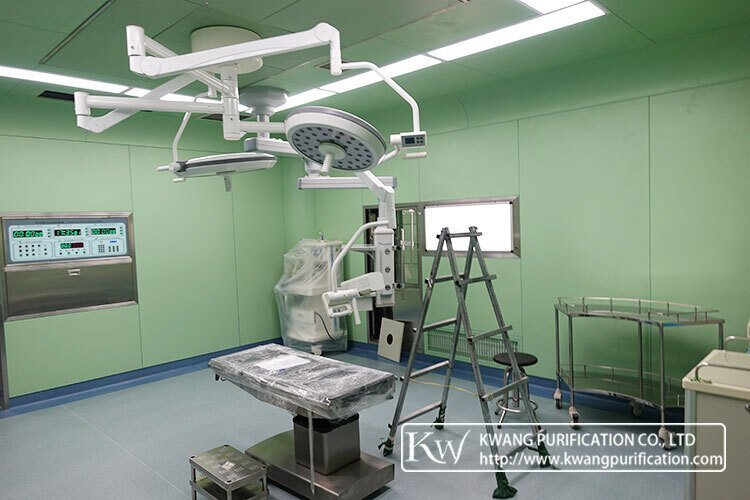Cleanroom Design for Hospitals and Healthcare Facilities
- 2024-02-01
- View 9
Cleanroom design in hospitals and healthcare facilities plays a crucial role in maintaining a sterile environment, preventing infections, and ensuring the well-being of patients. As medical technologies advance, the need for state-of-the-art cleanroom facilities becomes paramount.

Key Considerations in Cleanroom Design
Regulatory standards and complianceHealthcare cleanrooms must adhere to strict regulatory standards, such as those set by organizations like the FDA and CDC. Compliance ensures the safety of patients and staff by preventing contamination.
Purpose-specific design requirementsDifferent medical procedures require specific cleanroom design features. Tailoring cleanrooms to their intended purposes optimizes functionality and ensures the highest standards of cleanliness.
HVAC systems and air filtrationThe heart of any cleanroom is its HVAC system. Efficient air filtration, temperature control, and positive pressure play pivotal roles in maintaining a sterile environment.
Flooring and wall materialsSelecting the right materials for cleanroom flooring and walls is essential. Non-porous, easily cleanable surfaces contribute to the overall cleanliness of the environment.
Cleanroom equipment and technologyIncorporating cutting-edge equipment and technology is integral to modern cleanroom design. Robotics, advanced monitoring systems, and smart sensors contribute to maintaining optimal conditions.
Benefits of Cleanroom Design in Healthcare
Infection control and preventionCleanroom design significantly reduces the risk of infections in healthcare settings. Controlling airborne particles and maintaining a sterile environment contribute to positive patient outcomes.
Maintenance of sterile environmentsThe primary goal of cleanroom design is to create and maintain sterile environments. This is especially crucial in surgical theaters, laboratories, and areas where vulnerable patients are treated.
Impact on patient outcomesWell-designed cleanrooms positively impact patient outcomes by minimizing the risk of hospital-acquired infections. This, in turn, reduces the length of hospital stays and overall healthcare costs.
IV. Challenges in Implementing Cleanroom Design
Cost considerationsWhile the benefits are clear, the initial cost of implementing cleanroom design can be significant. Balancing the need for a sterile environment with budget constraints is a challenge for healthcare facilities.
Ongoing maintenance and operational challengesMaintaining cleanroom standards requires ongoing efforts. Operational challenges include training staff to adhere to protocols, regular equipment maintenance, and monitoring air quality.
Staff training and adherence to protocolsEnsuring that healthcare professionals adhere to cleanroom protocols is essential. Comprehensive training programs are necessary to instill a culture of cleanliness and adherence to established procedures.
Future Trends in Cleanroom Design
Technological advancementsAdvancements in technology continue to shape cleanroom design. From improved air filtration systems to AI-driven monitoring, the future holds exciting possibilities for creating even safer healthcare environments.
Sustainable and eco-friendly design practicesAs sustainability gains importance, cleanroom design is no exception. Future trends focus on eco-friendly materials, energy-efficient HVAC systems, and environmentally conscious practices.
Conclusion
Cleanroom design is an indispensable aspect of ensuring the safety and well-being of patients in hospitals and healthcare facilities. While challenges exist, the benefits, including infection control and positive patient outcomes, underscore the importance of investing in state-of-the-art cleanroom facilities.
FAQs
What is the primary purpose of cleanroom design in healthcare settings?
Cleanroom design aims to create and maintain sterile environments, reducing the risk of infections and improving patient outcomes.
How do healthcare facilities balance the cost of cleanroom implementation with budget constraints?
Balancing the initial cost involves careful planning, considering long-term benefits, and exploring cost-effective design solutions.
What role do regulatory standards play in healthcare cleanroom design?
Regulatory standards, set by organizations like the FDA and CDC, ensure compliance and the highest standards of cleanliness to protect patients and staff.
Are there any notable case studies of successful cleanroom implementations in healthcare facilities?
Yes, studying successful implementations provides valuable insights and best practices for achieving optimal outcomes.
What future trends can we expect in cleanroom design for hospitals and healthcare facilities?
Future trends include technological advancements, such as AI-driven monitoring, and a focus on sustainable and eco-friendly design practices.
